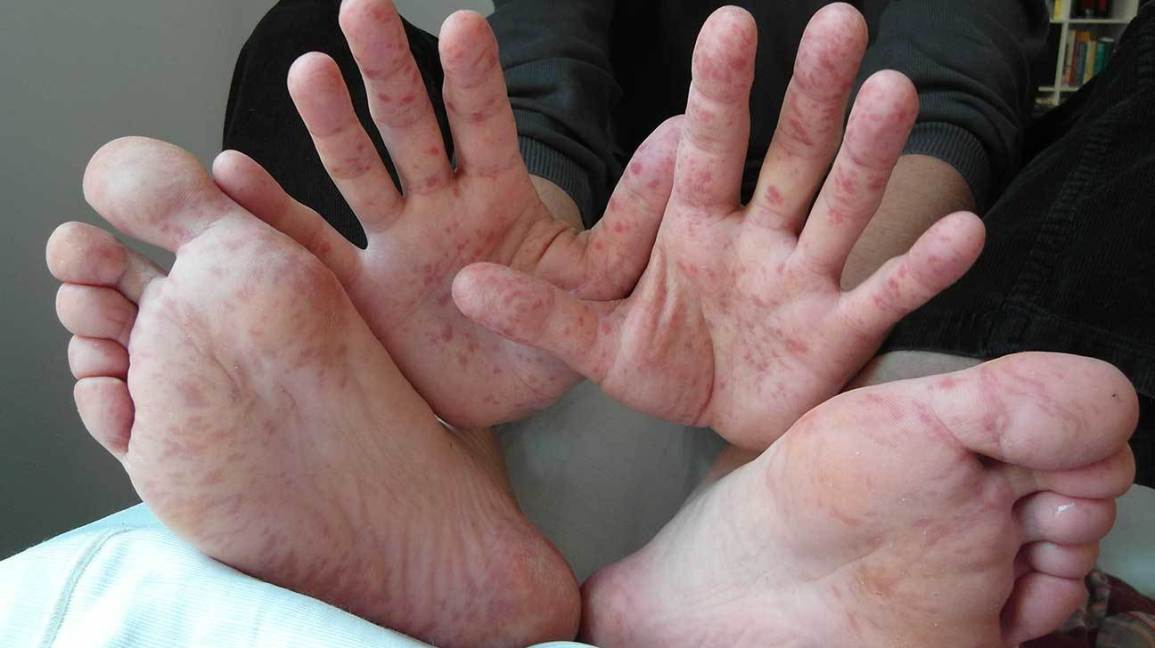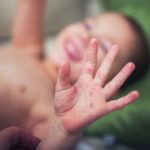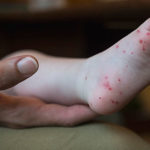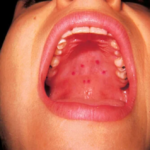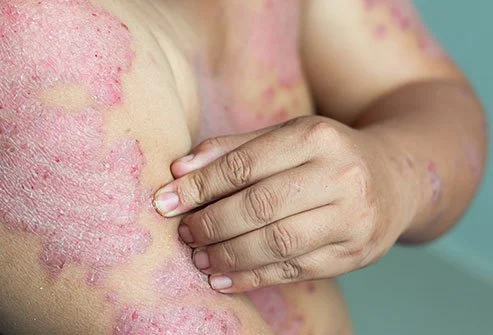Sometimes you may find a noticeable change in the color or texture of your skin. In medical terms, this visible change in appearance in your skin is termed a rash.
With a rash, your skin may turn bumpy, develop scales, turn itchy, or feel irritated. These rashes may appear in different parts of the skin for various reasons.
Here is a list of different known types of rashes:
Flea Bites
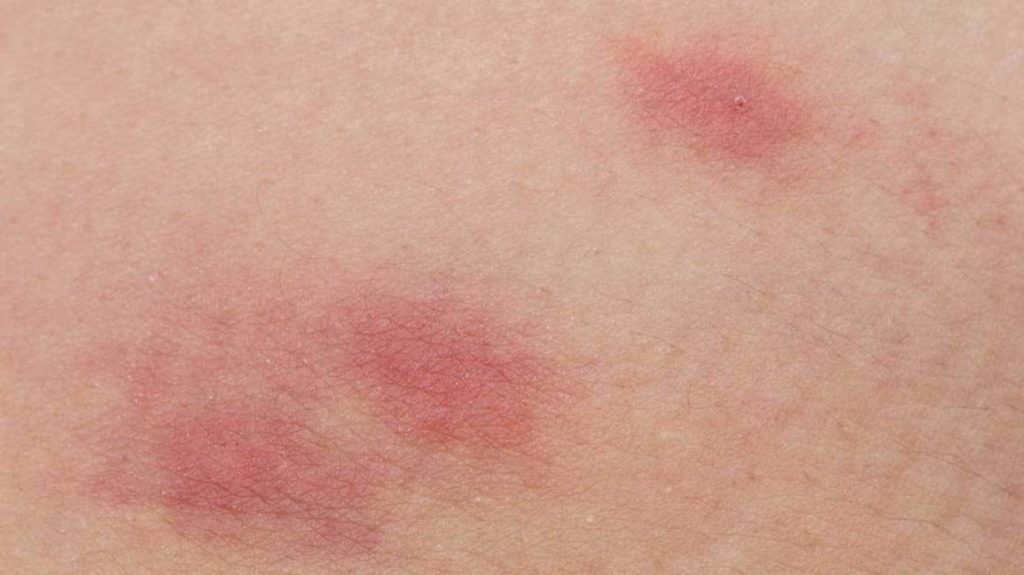
Fleas are minute bugs that may leave your skin itchy, painful, and sore when they bite. Bites are observed in clusters primarily on the feet or the lower legs. You may find an itchy, red bump at the infected area surrounded by a prominently visible red halo.
Fifth Disease
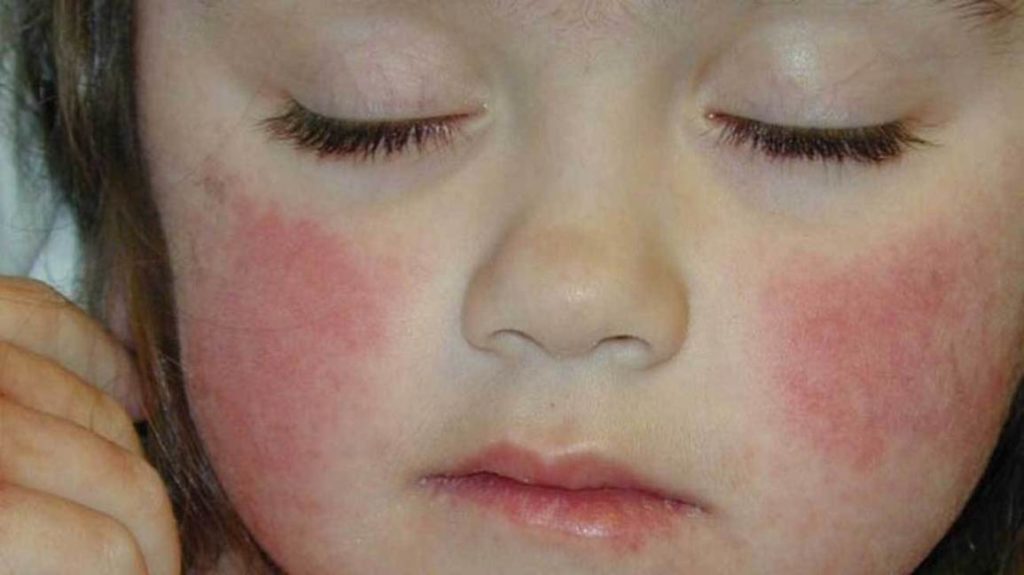
If you notice red rashes on your cheeks, arms, and legs combined with fatigue, mild fever, headache, sore throat, nausea, diarrhoea, and a runny nose, chances are, you are infected with a viral disease named the fifth disease.
The most visible signs are round red rashes on the cheeks of the patient. Symptoms are more prominent in children than in adults. In some cases, lacy-patterned rashes may appear on the legs, arms, and upper body. These rashes turn apparently visible after a bath or a hot shower.
Rosacea
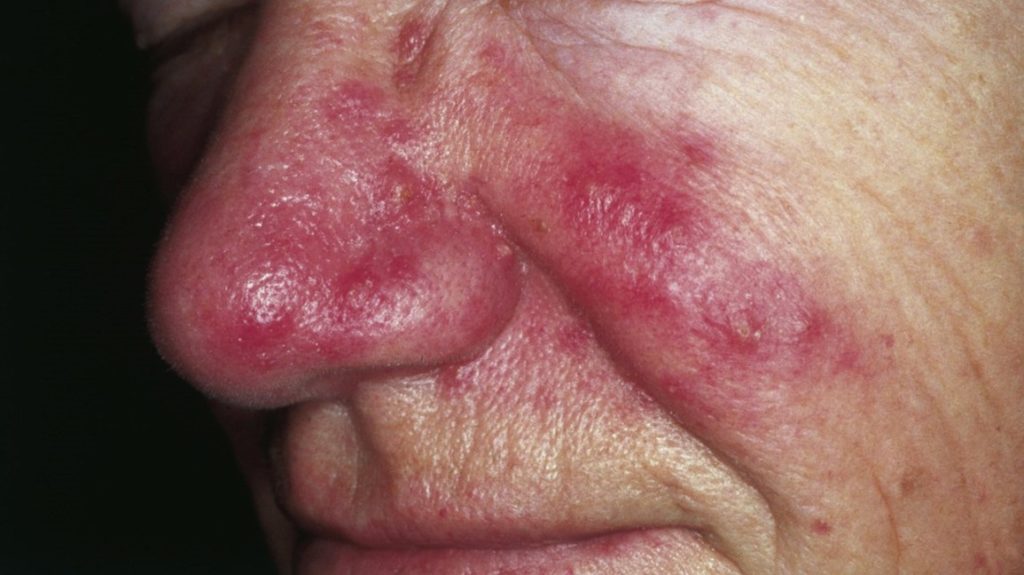
It is a chronic skin disease with an unknown cause and no cure. The patient may undergo cycles of fading, recovery, and relapse. Symptoms vary from facial flushing, raised skin, red bumps and skin dryness to facial redness and skin sensitivity.
In most cases, relapses are triggered by the ingestion of spicy foods or alcoholic beverages, exposure to sunlight and extreme stress. Sometimes the intestinal bacteria called Helicobacter pylori may also trigger the symptoms.
Impetigo
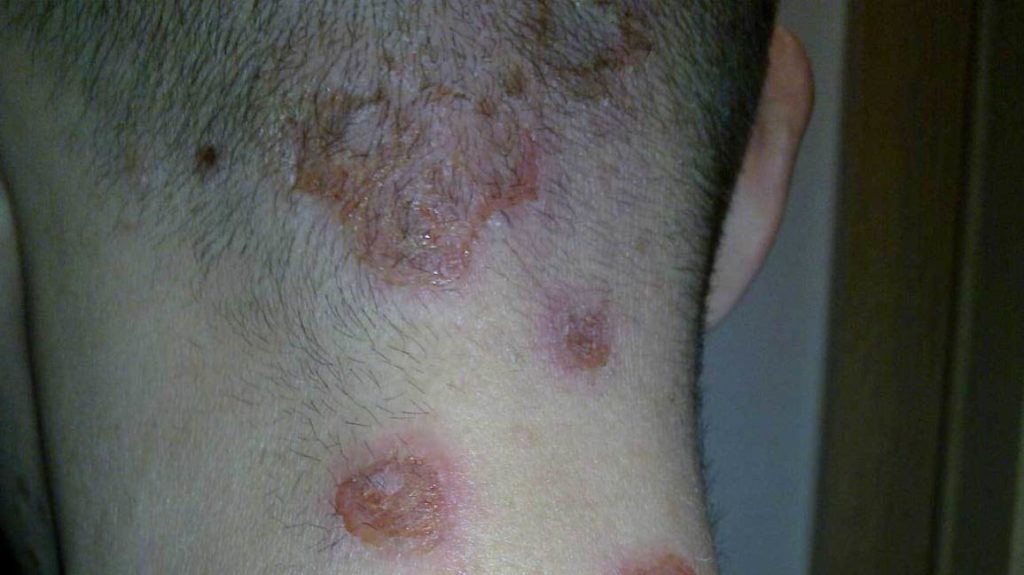
It is a contagious, bacterial skin infection commonly seen in babies and young children. Rashes appear visibly similar to insect bites or minor cuts around the mouth, nose, and chin.
Some patients suffer irritating rashes and fluid-filled blisters that form a honey-colored crust and pop easily.
Ringworm
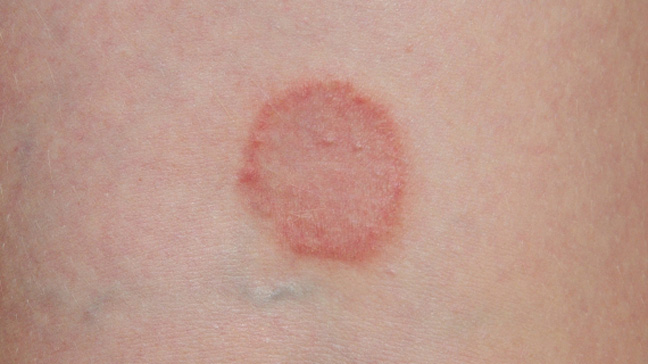
It is a fungal infection identified by circular-shaped, itchy, scaly rashes having a raised border. The lesions often resemble a worm-shaped like a ring, hence the name.
Many times, the skin in the middle appears clear and healthy. The edges of the ring often spread outward.
Contact 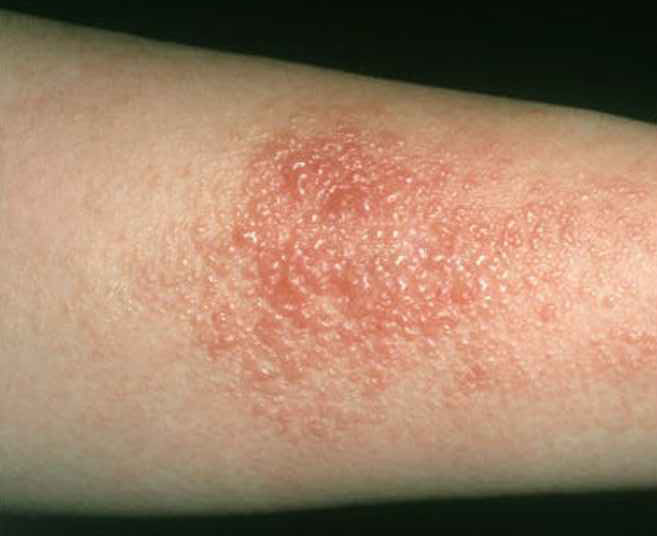
If you observe red patches and irritated skin after using a detergent or a new beauty product, such a reaction to the skin by an allergen is called contact dermatitis. The reaction may occur immediately or may take hours and days to appear after contact with the allergen.
Your skin turns red, may develop scales, feels itchy, and seems raw. Some patients may develop blisters that may weep, ooze, or turn crusty.
Allergic Eczema
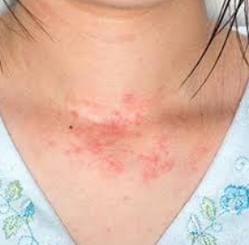
Whenever your skin is exposed to allergens, your immune system may trigger an allergic reaction in the form of rashes that resemble a burn. Itchy skin rashes may appear on hands and forearms. Some patients may develop blisters.
Mouth, Hand, and Foot Disease
It is a contagious viral infection primarily observed in children under the age of 5. Patients develop red, painful blisters in the mouth and on their tongue and gums.
Raised or flat red spots appear on the palms of their hands and soles of their feet. In some cases, spots may appear on the genitals and buttocks.
Diaper Rash
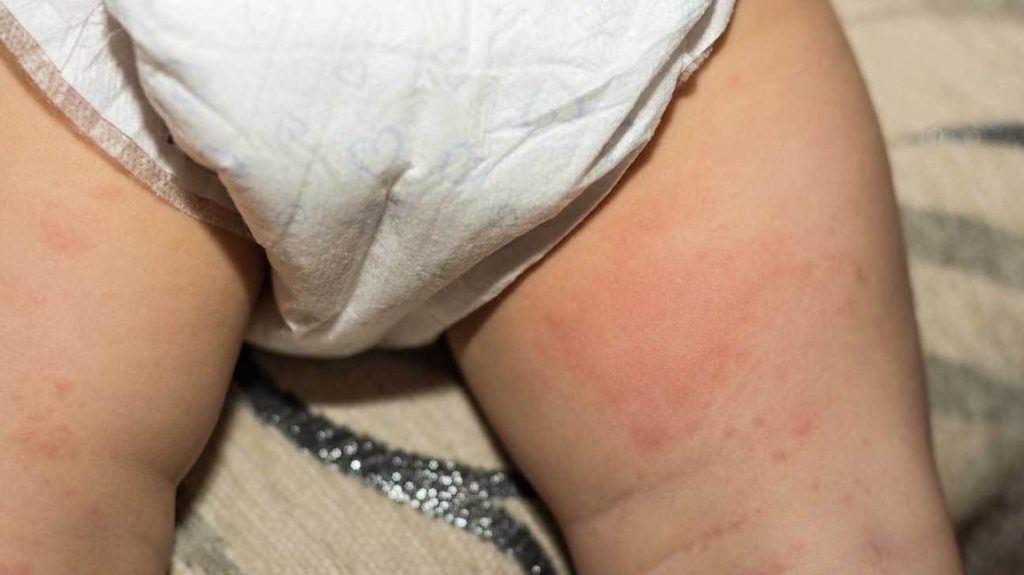
Infants often develop rashes wherever the skin comes in contact with a diaper for long. The infected area appears wet, red, and irritated. You may find it warm to touch.
Eczema
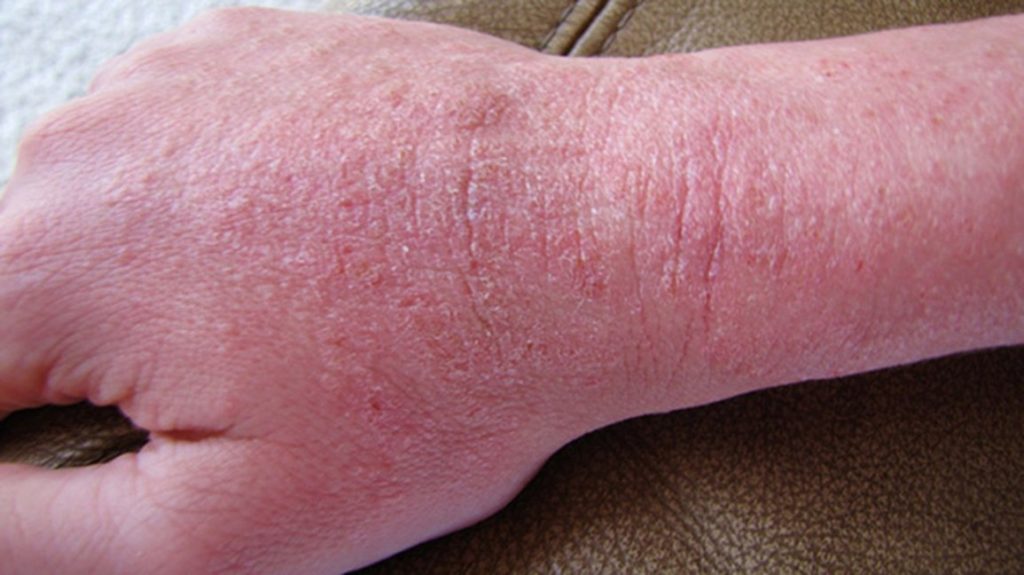
It is a common skin condition where white or yellow scaly patches develop on the infected skin. The infected area turns red and itchy, sometimes greasy or oily. Patients may also lose hair in the area with a rash.
Psoriasis
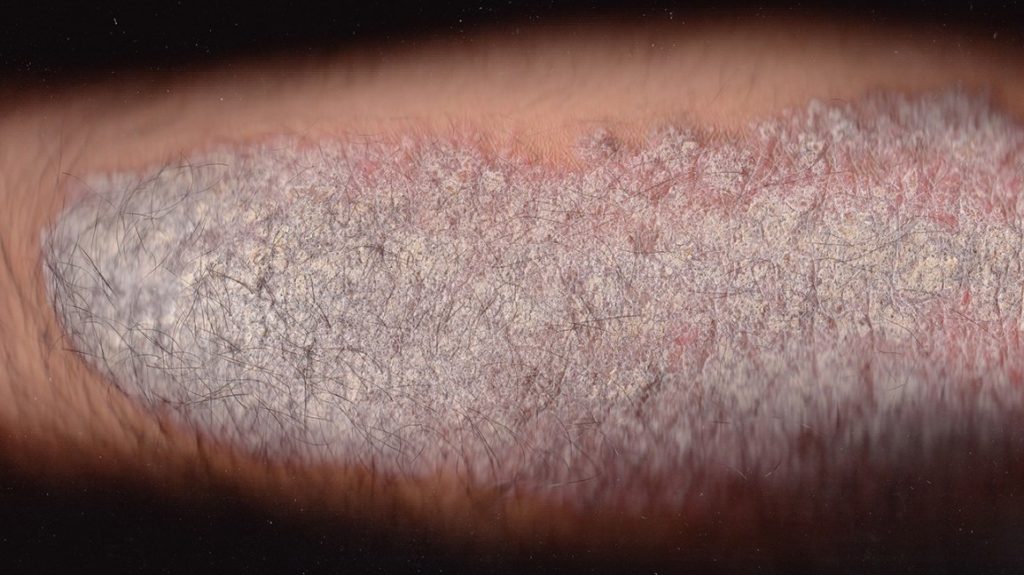
It is a chronic skin disorder where your immune system turns against your body. As a result, your skin develops sharply defined, scaly, silvery patches that may be asymptomatic or itchy. Rashes are commonly located on the elbows, knees, scalp, and lower back.
Chickenpox
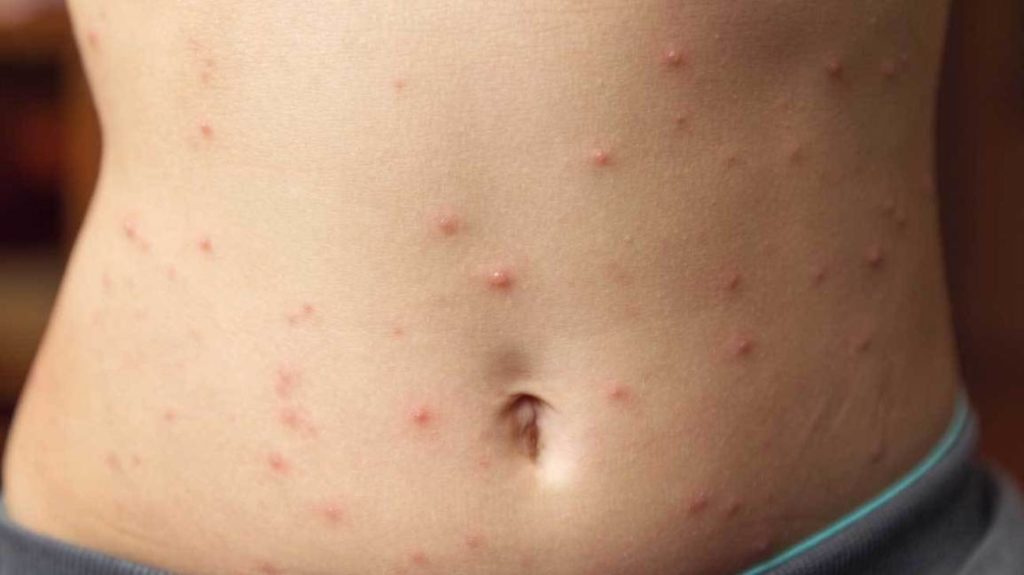
In this skin infection, patients develop clusters of red, itchy, fluid-filled blisters all over the body. Some patients also experience fever, sore throat, body aches, and loss of appetite. The blisters are contagious until they have crusted over.
Systemic Lupus Erythematosus (SLE)
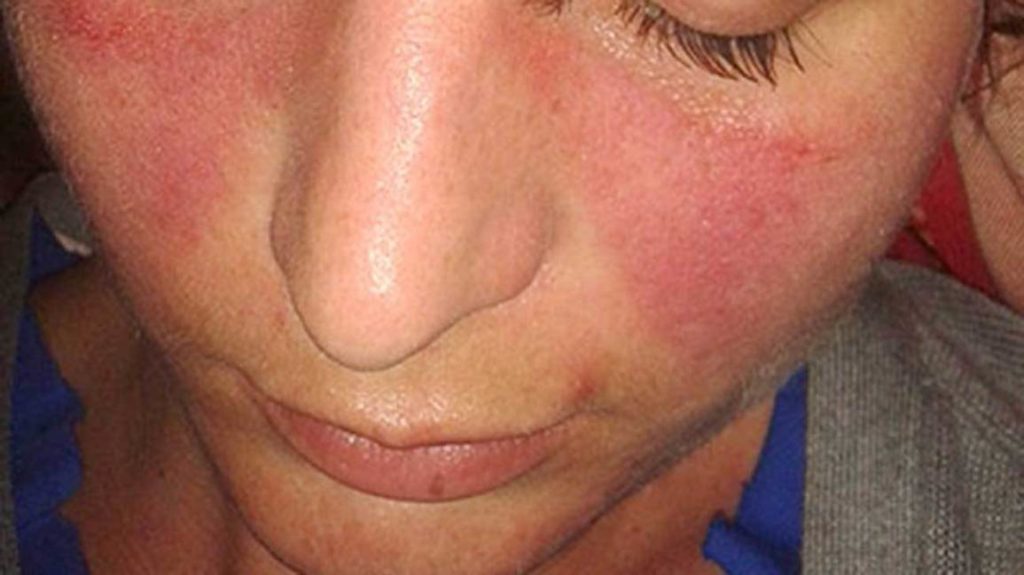
It is an autoimmune disease with a wide variety of symptoms. It infects different organs and body systems. The symptoms on the skin and mucous membrane range from mild rashes to ulcers.
Many patients display the classic butterfly-shaped rash on the face that crosses over the nose from one cheek to the other. Exposure to the sun may worsen the rashes.
Shingles
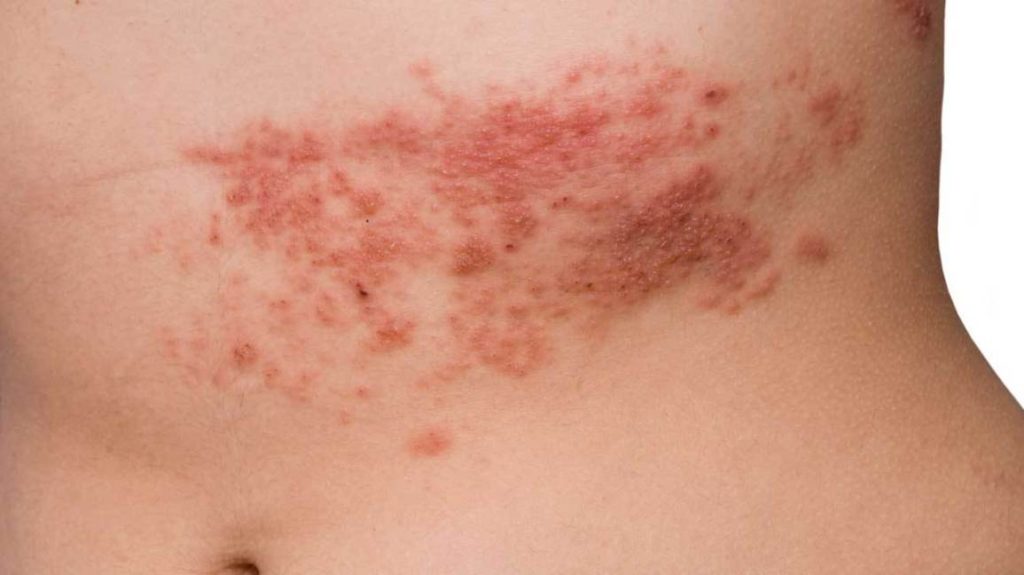
Patients develop itchy, painful rashes with a burning or tingling sensation. Some patients may have clusters of fluid-filled blisters. Rashes commonly emerge in a linear striped pattern primarily on the torso.
However, some patients may have rashes on other parts including the face. Patients may complain of fatigue, headache, low fever, and chills.
Cellulitis
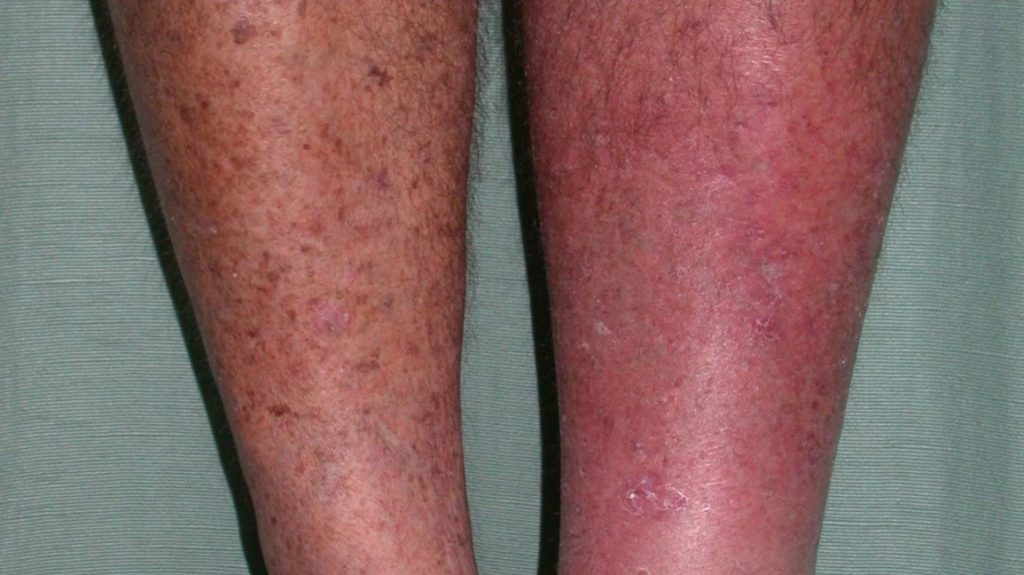
This skin condition requires immediate care and is considered a medical emergency. It is primarily caused by fungi or bacteria in the form of cuts and cracks on the skin. The skin appears swollen, red, and painful.
The infected area is warm and tender to touch. Patients may experience chills, fever, and red streaking in case of serious infection.
Drug Allergy
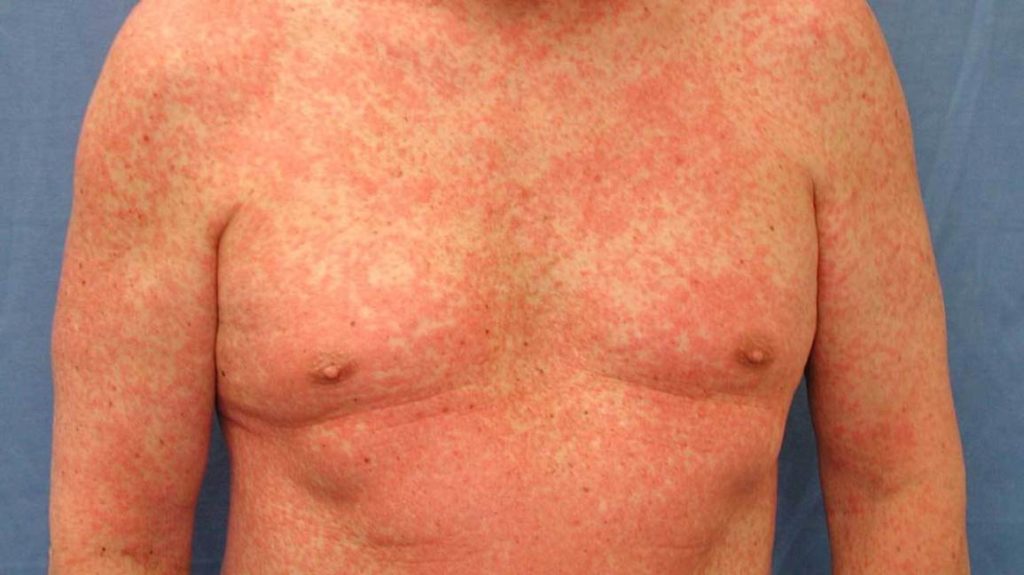
Some patients may develop mild, red, itchy rashes as an allergic response to drug intake. Symptoms may include swelling, itching, hives, racing heart, difficulty breathing, upset stomach, mild fever, and tiny red or purple dots on the skin.

